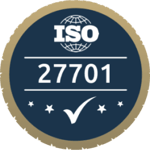Deliveries Shouldn't Fail. Parth, our AI NDR Agent Rescues Them
Parth, ClickPost’s intelligent AI voice agent, ensures every delivery reaches its destination - precisely and effortlessly
- 40% Reduced RTOs
- 30% Cost Reduction
- 75% Lower Support Load

Trusted by 450+ global brands
Automate 90% of your Failed Delivery Resolutions
ClickPost's NDR Management Suite ensures your revenue is protected, your operations team stays focussed on growth and your customers are happy.


The NDR flow helps me be proactive about reducing undelivered orders. This has reduced RTOs and improved customer experience. ClickPost provided the tracking page and has WhatsApp service providers pre-integrated, so we did't have to lift a finger.

Mayank Jain
Product Manager, Kapiva
Attempts → Delivered
With intelligent automation and unparalleled insights, ClickPost’s NDR Management Suite maximizes your delivery success rates
Conversion Boosting NDR Journeys: Use WhatsApp, SMS, AI Calls, IVR


- Real-time customer resolutions
- Effortless multilingual communication
- Continuously Learns, optimizes, and delivers strategic insights

- Deploy quickly in just three intuitive steps
- Personalize workflows by carrier, undelivered reasons, and customer types
- Easy integrations with your existing technology stack
- Single dashboard to monitor all NDR cases and performance

- Pinpoint exactly where your NDR journeys need optimization
- Intelligent recommendations highlight
KPI performance for decisive action - AI insights to refine communication flows and proactively reduce future NDRs
Leading Carriers, Communication Gateways and more






.png?width=296&height=112&name=image%204%20(1).png)




.png?width=332&height=112&name=image%202%20(2).png)
ClickPost NDR Management: The Industry Standard
Frequently asked questions
How does ClickPost reduce the impact of undelivered e-commerce orders?
Every failed delivery triggers an automated loop - immediate customer outreach, structured feedback capture, and real-time API or report hand-off to the carrier, so deliveries stay in motion instead of returning to origin.
What is Parth, and how does it improve delivery success?
ClickPost’s intelligent AI voice agent resolves failed deliveries in real time. AI-driven, real-time customer calls ensure faster redelivery scheduling. It analyzes failure reasons to optimize carrier selection, reattempt strategies, and future logistics planning
What kind of automation does ClickPost provide for NDRs?
ClickPost’s NDR Management suite auto-handles multi-channel templates, time-based journeys, fallback rules, live carrier APIs, scheduled reports, and a dashboard for instant tracking, reducing dependency on manual calls, spreadsheets, and ticket triage.
What is the setup process for ClickPost’s NDR Management Suite?
Just three guided steps - 1. integrate a communication gateway, 2. add notification templates, and 3. create or import NDR journeys, let most brands go live in a few hours, roughly 5× faster than legacy playbooks.
How fast can ClickPost resolve NDRs compared to traditional methods?
The automated workflows come into play ideally instantly after a shipment is marked undelivered, with follow-up WhatsApp/SMS/AI Calls triggered at the intervals you set (for example, T+60 min, T+120 min). Because feedback is captured and relayed to the carrier in real time through APIs and reports most cases are actioned the same day, reducing support load by 75%.
Top-notch security certifications

SOC 2
SOC 2 standards for worry-free data security

GDPR
Compliant with data security & privacy

ISO 27001
Internationally certified for information security

ISO 27701
Utmost user privacy for safety of users